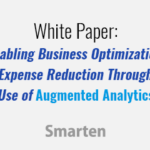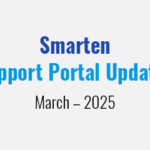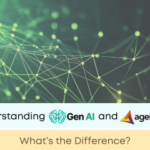Combine Traditional BI with Modern BI and Analytics to Improve User Adoption and Gain Advantage!

The world-renowned technology research firm, Gartner, predicts that, ‘through 2024, 50% of organizations will adopt modern data quality solutions to better support their digital business initiatives’. As businesses consider the options for data analytics, it is important to understand the impact of solution selection.
A business that wishes to improve its data quality, must also consider the positive impact of data democratization, user adoption of analytics solutions and the resulting increase in productivity, collaboration and fact-based decision-making.
‘When a business selects a solution that combines Traditional BI with Modern BI tools and Augmented Analytics, it can support business and user needs today and in the future.’
There are a number of factors a business should consider when it reviews prospective solutions. These factors include available features, user access, including mobile access, ease-of-use and more. Today’s business users work in an environment that requires both traditional BI tools, and modern business intelligence with augmented analytics capabilities.
In order to clarify the importance of this combined solution approach, it is important to understand the difference between Traditional BI tools and Modern BI and Analytics Tools.

Traditional Business Intelligence focuses on analyzing past results, with self-service features and basic components, including personalized dashboards for clear visualization, key performance indicators (KPIs) and reporting, as well as Mobile BI available on desktop or mobile device, Social BI and Embedded Business Intelligence with APIs to embed BI tools within familiar, favorite enterprise applications for simple, accessible analytics within the enterprise app. Out-of-the-box mobile business intelligence provides easy-to-use report formats to create non-columnar, custom reports and templates and design and configure documents that suit the needs of the business. Traditional BI tools support power business users with self-serve report creation – all without the need for SQL skills or IT assistance.
Modern BI and Augmented Analytics takes business user analytics to the next level with advanced analytics components including self-serve data preparation, smart data visualization, assisted predictive modeling and natural language processing (NLP) foundational search analytics so users can ask a simple question and get a simple answer without coding or queries. This type of solution includes key influencer analytics, anomaly detection, alerts, clickless analytics and other tools designed to support the transformation of business users to Citizen Data Scientists and to increase data literacy in the enterprise.
The benefits of a combined traditional BI and modern BI and augmented analytics solution include:
Ease-of-Use Improves User Adoption – When the business combines Modern BI tools with advanced analytics, it can encourage user adoption with tools that are easy and intuitive to use, thereby improving total cost of ownership (TCO) and return on investment (ROI). With simple, Google-like search techniques, business users with average skills can leverage BI tools and augmented analytics to gather and analyze data and receive results that are clear and easy to understand. These tools should support the user within the walls of the office and outside the office with Mobile BI so users can work remotely and still have all the information they need, working on whatever device is easiest for them to access at the time.
Integration – Embedded BI with integration APIs that allow users to access familiar enterprise applications and provide BI tools in a single sign-on environment to improve user adoption of BI tools and analytics and expand the value of existing business applications and software.
Flexibility, Upgrades and TCO – Perhaps the most important factor of solution selection is to choose a solution that will stay abreast of technology and market changes. As modern BI and analytics markets change, the business will want to support its users with appropriate upgrades, new technology, new features and a solution design that reflects the most up-to-date analytics trends and position itself to be agile, flexible and responsive to the market with an affordable, dependable solution that encourages user adoption.
‘Gartner, predicts that, ‘through 2024, 50% of organizations will adopt modern data quality solutions to better support their digital business initiatives’. When the business combines Modern BI tools with advanced analytics, it can encourage user adoption with tools that are easy and intuitive to use, thereby improving total cost of ownership (TCO) and return on investment (ROI).’
A solution that combines traditional BI tools and modern BI tools and augmented analytics ensures that the business has what it needs and that its users can leverage the tools and features that best suit their role and their responsibilities to achieve the best outcomes. There is no need to deploy and maintain two different tools or multiple technology stacks. A one-stop solution with both components allows users to access crucial analytical and BI tools using a mobile device, and to collaborate with other users to improve productivity and fact-based decision-making.
Discover the possibilities of Traditional BI Tools, Modern BI and Analytics and the advantages of the Augmented Analytics approach to advanced analytics.











